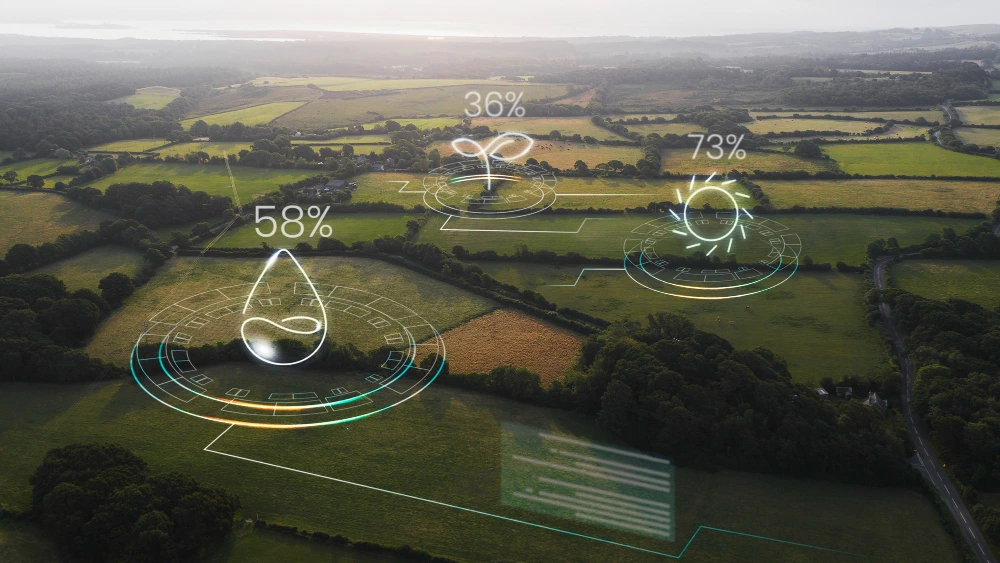Agriculture has long been the backbone of the economies in China and India. Feeding billions, these countries face enormous challenges in terms of food security, sustainability, and rural development. In recent years, technology has emerged as a transformative force in the agricultural sector, promising to increase productivity, reduce waste, and improve the lives of farmers. Here’s how agritech is revolutionising farming in these two giants of the East.
The State of Agriculture in China and India
Agriculture in China and India differs significantly, but both nations share common challenges: a large agricultural workforce, small-scale farms, and heavy reliance on traditional practices. Climate change, water scarcity, and rural poverty add to the complexity. Governments in both countries are actively promoting technological solutions to modernise agriculture, knowing that their food systems need urgent upgrading to support their massive populations.
In China, government policy favours large-scale, high-tech farming. With shrinking rural labour forces, technology is seen as essential to keep production levels high. India, on the other hand, has a predominance of smallholder farmers who rely on diverse crops and seasonal rains. Here, technology aims to empower small farmers, giving them tools to enhance productivity, reduce costs, and access better markets.
Technological Innovations in Chinese Agriculture
China has embraced high-tech agriculture, investing heavily in advanced technologies to transform its agricultural landscape. Here’s a closer look at some of these innovations:
- AI and Big Data: Chinese farms are increasingly utilising AI to predict weather patterns, optimise planting schedules, and monitor crop health. Big data helps in analysing soil quality, water levels, and pest patterns, offering real-time insights to farmers.
- IoT and Precision Farming: Through IoT devices, farmers can monitor crop conditions down to the micro-level. Sensors provide data on soil moisture, temperature, and nutrient levels, enabling precise farming methods. Drones and satellite imagery also aid in monitoring large tracts of land.
- Robotics and Automation: Robots are being used to automate labour-intensive tasks like planting, harvesting, and sorting. Automated greenhouses allow for year-round crop production, reducing dependency on seasonal cycles.
- Vertical and Smart Farming: Urban agriculture is gaining traction in cities like Beijing and Shanghai. Vertical farms and smart greenhouses use LED lighting, nutrient solutions, and climate control to grow crops efficiently indoors, reducing land and water use.
Case Study: The Chinese agritech company XAG specialises in agricultural drones that help farmers with everything from pest control to seeding. XAG drones are especially beneficial in rural areas with limited access to agricultural machinery.
Technological Innovations in Indian Agriculture
In India, technology adoption is focused on making tools accessible for smallholder farmers. Here’s how agritech is being utilised to meet India’s unique agricultural needs:
- Mobile Apps and Digital Platforms: Farmers in India now use mobile apps to check weather forecasts, get crop recommendations, and access marketplaces. Apps like Kisan Network and AgriBazaar allow farmers to buy and sell produce directly, improving market access and pricing.
- Satellite Imagery and Remote Sensing: Satellite data helps track crop health, predict yields, and assess drought conditions. Remote sensing technology enables farmers to optimise water and fertiliser use, reducing costs and environmental impact.
- Micro-Irrigation and Drip Systems: With water scarcity being a significant challenge, micro-irrigation systems are helping farmers conserve water. Precision irrigation technologies ensure that crops get the right amount of water, improving efficiency and crop yield.
- Agri-Fintech Solutions: Access to credit is a major issue for Indian farmers. Agri-fintech solutions offer digital loans, insurance, and savings products tailored for agriculture, helping farmers finance seeds, fertilisers, and equipment.
Case Study: DeHaat, an Indian agritech startup, connects small farmers with input suppliers, financial services, and buyers. By using AI and big data, DeHaat provides tailored advice, helping farmers make informed decisions and increase their income.
Comparative Analysis: China vs. India in Agritech
China and India take different approaches in agritech, influenced by their distinct agricultural landscapes and priorities. China’s focus is on scaling high-tech solutions like robotics and AI, driven by the need to sustain large-scale production with fewer workers. In contrast, India emphasises affordable, accessible technologies that support its smallholder farmers, using mobile platforms and digital tools.
Government policies also reflect these differences. China’s government encourages large investments in advanced agricultural technology, often collaborating with tech giants. India, meanwhile, provides subsidies and support to smaller tech initiatives that empower rural farmers and improve supply chains.
Impacts on Farmers and Rural Development
The benefits of agritech are profound in both countries. Farmers in China are experiencing increased productivity, while urban farming initiatives are making food production more sustainable. In India, agritech is democratising access to information, markets, and financial resources, which is especially transformative for rural communities.
These technologies help improve farmer incomes, reduce crop wastage, and address food security challenges. Agritech also contributes to rural development, creating jobs, enhancing skills, and connecting remote areas to larger economic networks.
Challenges and Barriers to Agritech Adoption
Despite progress, both China and India face significant obstacles to widespread agritech adoption.
- Digital Literacy: In rural areas, farmers often lack the skills to use advanced technologies. Training programs are essential to bridge this gap.
- Infrastructure and Connectivity: Reliable internet and power supply remain a challenge, especially in remote regions. Without connectivity, digital solutions can’t reach their full potential.
- Funding and Investment: Agritech innovation requires significant investment, and while China has an advantage with large government support, Indian startups often rely on private funding, which can be limited.
- Regulatory Hurdles: Both countries need clear policies to regulate data privacy, digital finance, and drone usage in agriculture. Regulatory support is critical to encourage investment and adoption.
Future Prospects for Agritech in China and India
Looking ahead, the future of agritech in China and India appears promising. In China, trends like AI-driven food production and autonomous farming are set to grow, further automating the industry. India is likely to see more mobile-based solutions, with a focus on improving supply chain logistics and rural e-commerce.
Both countries are also exploring sustainable practices, such as carbon-neutral farming, to address environmental challenges. China and India’s combined efforts in agritech are likely to influence global agricultural trends, potentially offering models for other developing nations.
Conclusion
Agritech is paving the way for a new era in farming in China and India. From AI and big data to mobile apps and micro-irrigation, these technologies are addressing age-old challenges in innovative ways. By empowering farmers, improving food security, and boosting rural economies, agritech holds the promise of a more sustainable and prosperous future for the East. As these countries continue to invest in and adopt agritech, they are setting an example of how technology can transform agriculture for the better.


